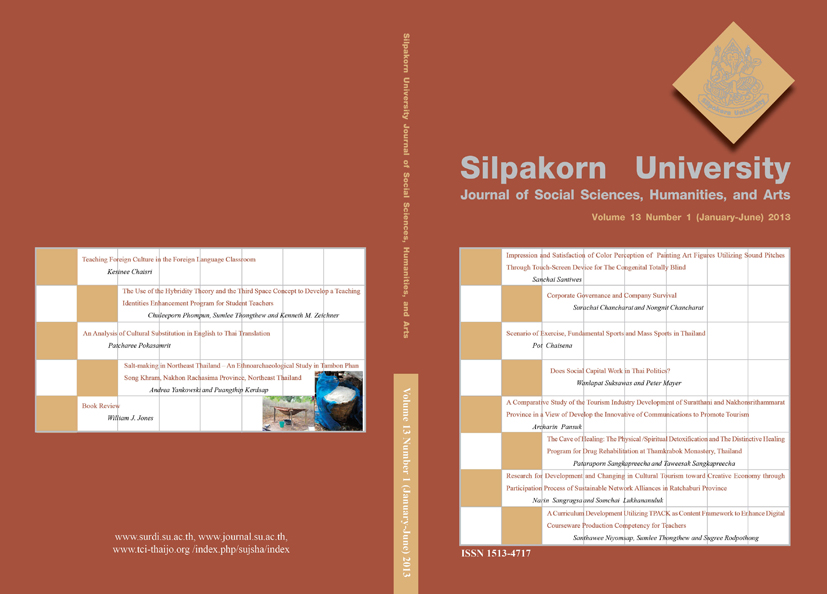Teaching Foreign Culture in the Foreign Language Classroom
Main Article Content
Abstract
Learning about foreign culture is becoming increasingly more important in the learning of a foreign language. Learners, apart from learning grammar, the phrasal structure and the vocabulary of the target language, have to learn how to communicate with the native speakers of a particular language. They have to achieve an intercultural understanding while still preserving their own culture. Different teaching methods take this into account; traditional methods (Grammar-Translation approach), Audio-Oral and Structured-Global Visual-Audio approach (SGVA), the Communicative approach, the Socio-cultural approach and the Intercultural approach. This article aims to show the different teaching methods that language teachers can adapt or be aware of when they teach foreign culture in the classroom.
Downloads
Article Details
All rights reserved. Apart from citations for the purposes of research, private study, or criticism and review,no part of this publication may be reproduced, stored or transmitted in any other form without prior written permission by the publisher.
References
Abdallah-Pretceille, M. and Porcher, L. (1996) Education et communication interculturelle. Paris : Presses Universitaires de France.
Atienza, J. L., Berard, E., and De Carlo, M. (1995) Approches communicatives: une enquête sur l’état de la question. Etudes de linguistique appliquée, 100: 151-160.
Beacco, J. L. (1980) Compétence de communication: des objectifs d’enseignement aux pratiques de classe. Le français dans le monde, 153: 35-40.
Canale, M. and Swain, M. (1980) Theoretical Bases of Communicative Approaches to Second Language Teaching and Testing. Applied Linguistics 1: 1-47.
Coste, D. (1980) Communicatif, fonctionnel, notionnel et quelques autres. Le français dans le monde, 153: 25-34.
Cuq, J. P. (2003) Dictionnaire de didactique du français, langue étrangère et seconde. Paris : Clé international.
Cuq, J. P. and Gruca, I. (2003) Cours de Didactique du Français Langue Etrangère et Seconde. Grenoble: Presses universitaires de Grenoble.
De Carlo, M. (1998) L’interculturel. Paris : Clé International.
Defays, J. M. (2003) Le français langue étrangère et seconde. Belgique : Mardaga.
Edelhoff, C. and Bommel, H. V. (1980) Objectifs de l’enseignement des langues et pratiques relevant de la compétence de communication. Le français dans le monde, 153: 48-52.
Lavenne, C., et al. (2001) Studio 60. Paris : Les Editions Didier.
Kerzil, J. and Vinsonneau, G. (2004) L’interculturel: Principes et réalités à l’école. Paris : Sides.
Martinez, P. (1996) La didactique des langues étrangères. 3rd Edition. Paris: Presses Universitaires de France.
Mérieux, R. and Loiseau, Y. (2008) Latitudes 1. Paris : Les Editions Didier.
Neuner, G. et al. (2003) La compétence interculturelle. Strasbourg: Editions du Conseil de l’Europe.
Poisson-Quinton, S. and Sala, M. (1999) Initial 1. Paris : Clé International.
Puren, C. (1998) ‘La culture en classe de langue: «Enseigner quoi ?»et quelques autres questions non subsidiaires’. Les langues modernes : Les contenus de civilisation 4, novembre-décembre-janvier, 40-46.
Puren, C., Bertocchini, P., and Costanzo, E. (1998) Se former en didactique des langues. Paris : Éllipses.
Pugibet, V. (1983) Des stéréotypes de la France et des Français chez des étudiants mexicains. Le français dans le monde, 181: 45-53.
Steele, R. (1996) Culture ou intercultures. Le français dans le monde, 283: 54-57.
Tagliante, C. (2006) La classe de langue. Paris : Clé International.
Windmuller, F. (2003) Compétence culturelle et compétence interculturelle : pour un apprentissage culturel en classe de FLE. Thèse. Université de Rouen.
Zarate, G. (1983) Objectiver le rapport culture maternelle/ culture étrangère. Le français dans le monde, 181: 34-39.
Zarate, G. (1986) Enseigner une culture étrangère. Paris: Hachette. (N.A.) (N.D.) Educate students of French language to the intercultural. [Online URL: http://www.francparler.org/dossiers/interculturel_former.htm accessed on June 10, 2012.


